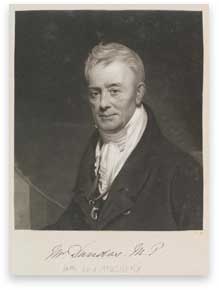Dundas, Charles, 1st Baron Amesbury:
 In a previous post, I mentioned my desire to include the Kennet and Avon canal in a Charlotte House affair, and I’m happy to say I’ve started that as yet untitled story, but as usual I’m being plagued by research.
In a previous post, I mentioned my desire to include the Kennet and Avon canal in a Charlotte House affair, and I’m happy to say I’ve started that as yet untitled story, but as usual I’m being plagued by research.
I decided to use Charles Dundas as the introduction to the story, and as he is an actual historical figure I can’t go too far afield. He must be the same age as he would have been in real life and have the same concerns, but I’ve yet to find any real measure of his personality apart from a few odd references. And so I am basing my Charles Dundas on his portrait, which I think shows a decent man with the edge of a smile just creeping into existence. The facts of his life as I know it (see references below) are these:
He was born Aug. 5, 1751, the younger son of Thomas Dundas and Lady Janet Maitland (who was the third and youngest daughter of the Earl of Lauderdale and Mr. Dundas’ second wife).
He graduated from Trinity College, Cambridge in 1773, admitted to the Middle Temple in 1774 and called to the bar in 1777, but practiced little because in 1775 he stood for Richmond in Parliament, remaining in that seat until 1780. And then for Orkney and Shetland, 1781-84; for Richmond, 1784-90; and for Berkshire (which he represented in 10 successive Parliaments), 1794-1832. So he was basically a long-time and presumably successful politician. He was nominated as Speaker of the House in 1802, but declined in favor of the other candidate.
It was his first wife Anne who brought Thomas Dundas the estates of Kintbury-Amesbury (spelled Kentbury-Ambresbury in the obituary) in Bershire, and where was his mansion Barton Court situated. They had a daughter, also named Anne, born in 1783. Anne died in 1812 and Dundas married Margaret Barclay-Maitland in 1822.
In 1832, the year of his death, Dundas was made Baron Amesbury, but having no male survivors, the title became extinct.
What is important to my story, is that Dundas was the chairman of the Kennet and Avon Canal Company and appeared to be a crucial figure at several times during the history of the canal, being one of the early proponents of the joining of the Kennet and Avon navigations in 1788. He was also able in 1793 to quell a rebellion of Bristol businessmen impatient with the slow progress of the canal (see Planning the Canal — The Need in the history section of the K&A Trust website).
As with most grandiose schemes, the joining of the Avon navigation (the navigable part of the river from Bristol to Bath and the Kennet navigation (from Reading to Newbury) was plagued by delays, concerns over the water supply and investors who didn’t cough up the money they’d pledged.
So my image of Dundas is of a consummate politician who turned down the position of the Speaker of the House, calling the other candidate “Mr. Abbot so much better qualified to fulfil the duties of that high and important station, that he was determined to support him.” He also said “his own ambition was confined to the honour of being a simple, but independent, member of Parliament.” He comes across to me as a younger son who did well, married wisely and then married again late in life. From a few comments in the Dundas family memorials, he seems to have been a good brother to Thomas.
Charles Dundas was also “one of the six Counsellors of State to the Prince of Wales in his capacity of Great Steward of Scotland; and was Colonel of the White Horse Volunteer Cavalry.”
So I hope my image of a decent man with a sense of humor, maybe even gallant with the ladies, is not in error.
